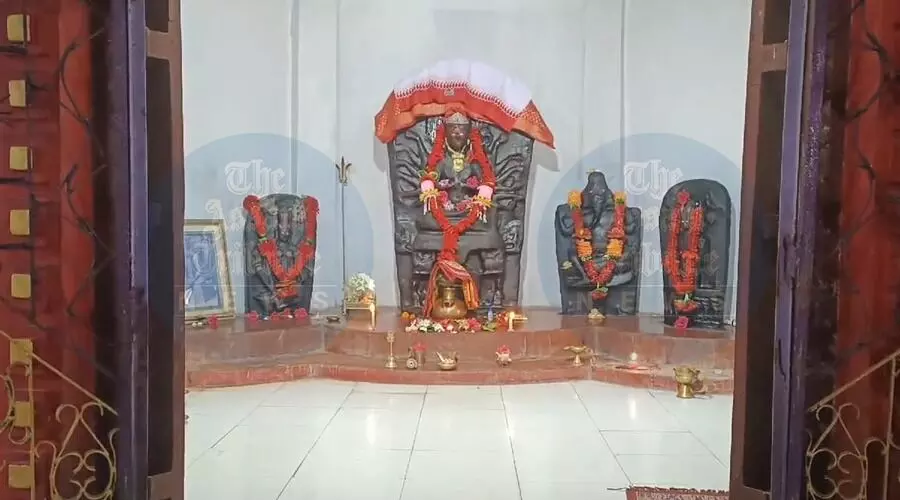How a mystical 18-handed idol powers South Tripura’s grandest Diwali celebration
Experts believe the idol dates back to the 6th or 7th century, resembling Buddhist sculptures from Pilak

AT Photo: Raj Rajeswari Temple in Tripura
Agartala, Oct 19: Tucked away in the unassuming village of Muhuripura, under the Santirbazar subdivision in Tripura, lies a rare relic of ancient India—a six-foot, one-ton, 18-handed rock-carved idol.
Revered as a form of "Shakti”, this idol has become the heart of South Tripura's largest Diwali celebrations, drawing thousands of devotees every year.
The history of this ancient deity is steeped in local legend. According to residents, the idol was discovered 70 years ago by a wandering ascetic, Harananda Giri, who kept it in his humble hut for years.
It wasn’t until Giri's disciple, Radharani Bhairabi, began worshipping the idol as Devi Raj Rajeshwari that it gained recognition as a divine figure. Over time, the villagers came to deify the idol, and it was relocated to its current temple, marking the start of an annual tradition that has grown into a major event for the region.
“The idol’s relocation wasn’t easy,” recalls Dulal Gope, a local social worker with a keen interest in archaeology. "We used bulldozers to shift the ancient stone to its new home—a sprawling temple that now hosts South Tripura’s most celebrated Diwali festival," he adds.
Experts believe the idol dates back to the 6th or 7th century and bears a striking resemblance to Buddhist sculptures excavated from Pilak, an important archaeological site managed by the Archaeological Survey of India (ASI).
Despite the resemblance, further studies on the idol are unlikely. “Since it has been consecrated and is now worshipped by thousands, there's no scope for us to intervene and examine it," an ASI official explained under anonymity.
This year, the grand two-day Diwali festival is set to begin on October 30, featuring traditional rituals, a vibrant fair, and cultural performances. Government departments will also set up stalls, ensuring a blend of spirituality, community, and administration.
The preparations are already in full swing, with an administrative meeting held at the temple to ensure the event runs smoothly. Officials, including Santirbazar's Sub-Divisional Magistrate (SDM) Manoj Kumar Saha, Sub-Divisional Police Officer (SDPO) Saugata Chakma, and Block Development Officer (BDO) Manas Bhattacharya, discussed traffic regulations, crowd control, and how to organise the event with government assistance.
As the festival approaches, Muhuripura is abuzz with anticipation. The village, once a quiet settlement, transforms each year into a hub of spiritual activity, with the 18-handed idol at the centre of it all—linking its ancient roots to the present-day traditions that bring the community together.
Locals remain dedicated to their annual worship, marking the festival with not just prayers but an unwavering sense of pride in their heritage.
"This idol is not just a relic; it's our identity, our connection to something much older and greater than us," says Gope.
For Muhuripura, Diwali is more than a celebration—it's a tradition that honours their past while paving the way for their future.
